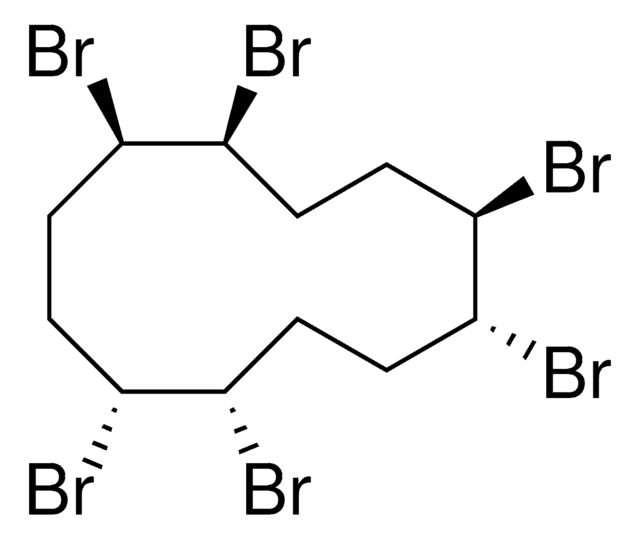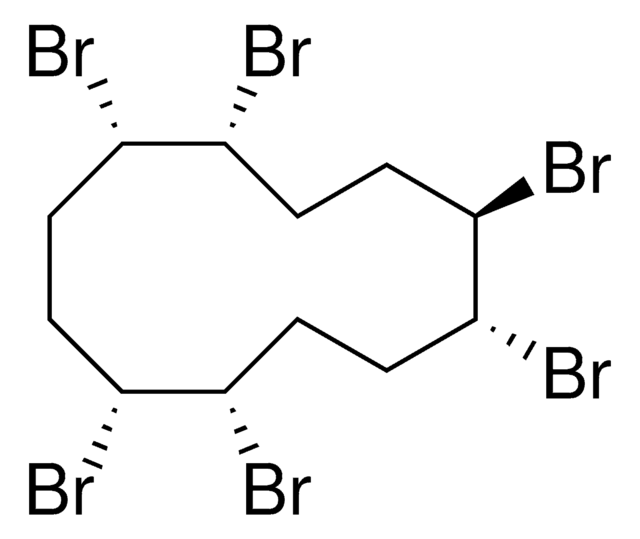144762
1,2,5,6,9,10-Hexabromocyclododecane
95%
Synonym(s):
HBCD, HBCDD
About This Item
Recommended Products
Assay
95%
solubility
acetone: soluble 25 mg/mL, clear, colorless to light yellow
water: slightly soluble
SMILES string
BrC1CCC(Br)C(Br)CCC(Br)C(Br)CCC1Br
InChI
1S/C12H18Br6/c13-7-1-2-8(14)10(16)5-6-12(18)11(17)4-3-9(7)15/h7-12H,1-6H2
InChI key
DEIGXXQKDWULML-UHFFFAOYSA-N
Looking for similar products? Visit Product Comparison Guide
General description
Application
Biochem/physiol Actions
Signal Word
Warning
Hazard Statements
Precautionary Statements
Hazard Classifications
Aquatic Acute 1 - Aquatic Chronic 1 - Lact. - Repr. 2
Storage Class Code
11 - Combustible Solids
WGK
WGK 3
Flash Point(F)
Not applicable
Flash Point(C)
Not applicable
Personal Protective Equipment
Regulatory Listings
Regulatory Listings are mainly provided for chemical products. Only limited information can be provided here for non-chemical products. No entry means none of the components are listed. It is the user’s obligation to ensure the safe and legal use of the product.
EU REACH SVHC Candidate List
EU REACH Annex XIV (Authorisation List)
Choose from one of the most recent versions:
Already Own This Product?
Find documentation for the products that you have recently purchased in the Document Library.
Customers Also Viewed
Active Filters
Our team of scientists has experience in all areas of research including Life Science, Material Science, Chemical Synthesis, Chromatography, Analytical and many others.
Contact Technical Service













